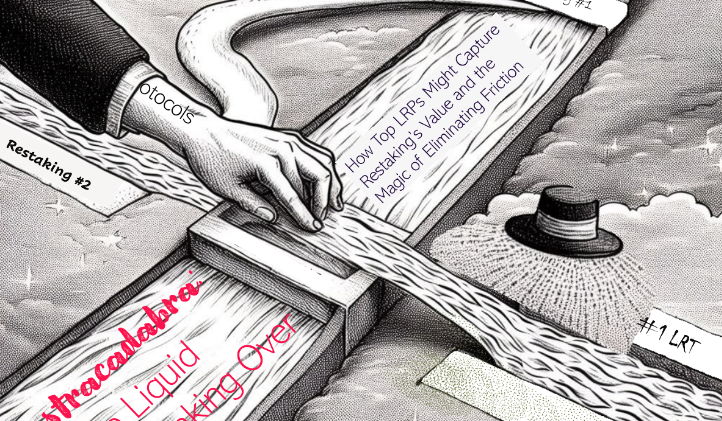
- Liquid Restaking Tokens (LRTs) enhance Ethereum staking efficiency, enabling broader use of capital in DeFi protocols.
- In 2024, the total value locked in LRTs skyrocketed by over 8,300%, reaching $13.8 billion from $164 million.
The Decentralized Finance (DeFi) sector is experiencing significant growth due to the adoption of Liquid Restaking Tokens (LRTs). These tokens are streamlining the Ethereum staking process and enhancing how capital is utilized within the DeFi space.
LRTs provide a liquid representation of staked tokens, allowing these assets to be used in other DeFi protocols without the need to lock in capital unnecessarily. This functionality is pivotal for increasing the flexibility and efficiency of capital in blockchain ecosystems.

In 2024, the total value locked (TVL) in LRTs escalated dramatically, marking an increase of over 8,300%. This surge brought the TVL from $164 million at the beginning of the year to $13.8 billion. This increase indicates a growing confidence and utilization of LRTs in the DeFi market.
Or Harel, the Token Engineering Analyst at Node Capital, said:
“Following ‘points rush’ for potential airdrops led to demand far outstripping supply in EigenLayer’s deposit caps. Leading Liquid Restaking Protocols (LRPs) capitalized on this technical arbitrage opportunity.
One of the many complexities they abstracted away was EigenPods management, abstracting this and related processes into a token. In a short period, these LRPs accumulated billions in stakers’ capital and built sophisticated operator infrastructure, positioning themselves as key facilitators of the supply side and gaining a strategic advantage in influencing the demand side of Actively Validated Services (AVSs).”
EigenLayer has a crucial role in the expansion of liquid restaking protocols. According to a report by Node Capital, EigenLayer facilitated this growth by simplifying the management of certain technical elements into a tokenized form, which has made these processes more accessible to a broader range of users. This approach not only simplified operations but also balanced the demand exceeding supply, especially evident during high-demand periods like potential airdrop events.

Additionally, the structure of these protocols supports the integration of various Actively Validated Services (AVSs), enabling blockchain projects to select and integrate necessary components seamlessly. This modular capability is essential for adapting to the rapid changes and needs within the blockchain environment.
Significantly, Ether.fi has become a dominant player in the LRT market, controlling over 50% of it. The protocol’s success is attributed to its user-friendly model that simplifies the traditional complexities of staking. This simplification has made Ether.fi a preferred choice for many users, reflecting a strategic adaptation to market needs.

The rise in popularity and the substantial increase in TVL of LRTs demonstrate a shift towards more efficient and user-friendly financial instruments in the DeFi sector. This trend suggests a potential redefinition of how financial operations are conducted in decentralized networks, indicating a move towards broader adoption and innovation in DeFi applications.
















